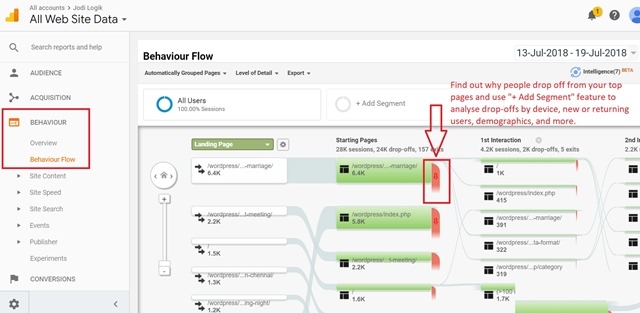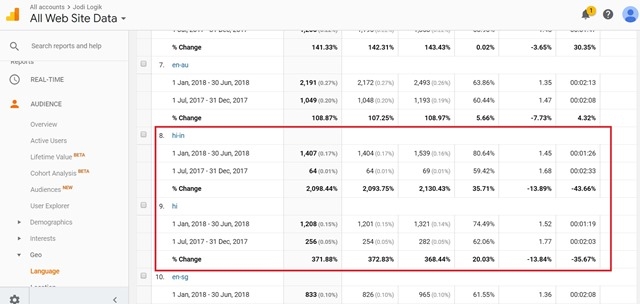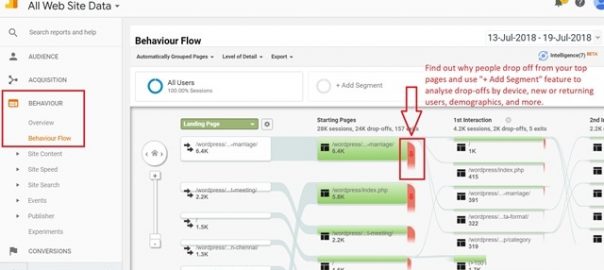There are two kinds of site owners:
1. Some have mastered the magic formula to skyrocket traffic to their site and ride into the sunset with a boatload of money. If you are one of them, you can move on to other blog posts.
2. Then there are those who have had some reasonable growth but are rapidly approaching stall speed. No SEO trick in the book is moving the needle.
If you belong to the second category, you should definitely try some unconventional approaches that most online marketers may not pay attention to.
Let’s dive in right away to explore some of the options you can try right now.
1. Say Goodbye To Your Site Traffic (Not Joking)
We have been conditioned to think that site traffic is the ultimate prize. However, the real goal that you should worry about is conversion and if you want to be really pragmatic, it’s a profitable conversion.
The good news is that if your site traffic is not growing, it’s not the end of the world.
Here are some steps you can take to improve your conversions and drive more of your existing site visitors into paying customers.
Step 1: Identify Your Top-performing Pages
a. First, make a list of your top performing pages. These are pages with the most traffic AND the highest conversion rates.
b. If you have pages that get limited search traffic but have very good conversion rates, you should categorize them as a top performing page.
c. Pages that get a lot of traffic and still don’t convert (that’s most likely if you don’t have anything of value to offer) can be left out.
Step 2: Find Out The Weak Spots In Your Top-performing Pages
You can do this by first figuring out how your site visitors land on these top performing pages and what they do on these pages.
You can get this data from Google Analytics.
Log into your Google Analytics account. Click on BEHAVIOR in the left side menu and click on Behavior Flow.

You will see how your site visitors navigate through your landing pages and how many of them actually end up on pages where they convert into customers.
This information is worth its weight in gold because it tells you how many people drop off from your landing pages.
If you can get even a small percentage of people who drop off from your landing pages to stay on your site and become your customer, you will see growth!
If you are adventurous, you can use the “+Add Segment” feature to slice and dice your landing page visitors based on a laundry list of parameters such as device types, demographics, new visitors, and repeat visitors to name a few.
Step 3: Getting More Site Visitors To Become Your Customers
Finally, put into practice everything you probably already know and dissected to death in other blog posts.
Revisit the page designs and the copy of all of the landing pages that you are targeting to improve. If you can afford to run an A/B test that’s even better. If not, follow this basic three-point checklist at least.
#1. Are The Pages Loading Fast Or Can You Make Them Load Faster?
Slow page load times can kill your conversion. You can read about the effect of page load times on conversion here.
You can use Webpagetest.org or Google Page Speed Analyzer to analyze this information. Once you have the results, work with your developer to apply the recommendations from the test.
#2. Are Your Key Pages Optimized For Mobile Devices?
Make sure your site is responsive. The shift from Desktop to mobile has already happened. A majority of your customers probably discover your site on their smartphone or tablet. You can verify this on Google Analytics. If not, you could be losing business. Make sure key call to action buttons and copy are clearly visible and actionable on mobile devices.
#3. Do You Have Feedback Loops On Your Landing Pages?
Make sure your site visitors can communicate with you easily from the landing pages as well as from pages where conversion is expected to happen.
Here is an example.
On my site, the print template library page is the most important page as it generates revenue for me.
Site visitors see a gallery of templates and pick one to purchase. I made sure they have an easy access to ask questions about the purchase by incorporating a customer support widget as a well as a feedback form.
The contact form and feedback form has given me valuable information on what customers are looking for in the templates. They tell me what is missing, what improvements can be made, and most importantly, what’s not working from their point of view.
I use all of this information to upgrade my product and make it better for my customers.
I could do better. I could have embedded a 3rd-party chat interface (such as Facebook Messenger) on this page and provide instant answers.
Just make sure you are online when your customers are active and find out if they need help. Most of the live chat products allow you to send default messages to trigger responses. You just need to be around to carry on a conversation.
2. Consider Acquiring Your Competitors
Here is a technique that doesn’t get discussed a lot but worth a shot if you believe you can pull it off.
Who said acquisitions is only for large evil corporations?
There are plenty of small online businesses and blogs that are struggling and you can just swoop in and end their misery while boosting your site traffic.
Neil Patel has declared publicly that acquisition is his go-to strategy for growing his business. You must be thinking Neil Patel is a super successful online marketer and how the hell can a small business do the things he can do?
Here are some simple things you can start doing to get your acquisition strategy off the ground.
Start by scouting your competitors and sites that seem to target your customers. They may be direct competitors or offering something of value to your customers.
You can begin by listing your competitors who do not have a monetization strategy in place.
How do you know if they have a monetization plan in place?
Here is a checklist that you should run to determine if your target site has a monetization plan:
1. Do they run ads?
2. Does the site have guidelines for product reviews or talk about affiliate marketing?
3. Are they taking donations?
4. Are they offering a product or service free of cost with no strings attached?
The next step would be to approach the site owner with an offer to buy the site. Of course, not everyone is motivated to sell the site and some of them do it for passion or for the greater good.
What should be the offer price?
This is probably the toughest part. You can take one of the three approaches:
1. Ask the site owner to quote a price. Duh!
2. Figure out the expected traffic growth after the acquisition and calculate the cost of doing it on your own.
Here is how you can do this:
a. Calculate the additional time and effort you will put in to grow your site traffic. This includes time to create new content, update existing content, backlinks outreach and time taken for your content to be found through organic search. Add up all these efforts and place a Dollar value to it.
b. Calculate the incremental infrastructure costs you may incur to support the growth in traffic.
c. Calculate any additional licensing fee that you will incur to run your conversion tools.
Add up all the three and this is the cost you will incur if you were to grow the traffic organically.
Use this as a benchmark when you negotiate. Don’t go by website site value calculators no matter what they say.
3. Calculate the expected growth in revenues and profitability by applying a conservative conversion rate on the new traffic you will acquire and use it as a basis for negotiation.
For example, if your average conversion rate is 2%, apply 1.5% or 1% conversion rate for the new traffic and find out what your revenues will look like after the acquisition. Identify a purchase price that will justify the expected revenues.
Once you have made the purchase, make sure you implement 301 redirects to your domain.
Neil Patel took over a blog that had competing content. He removed blog posts that were competing for the same keywords (by using 301 redirects to relevant pages on his site) and retained blog posts that targeted new and relevant keywords.
If you want to understand how the acquisition worked for Neil Patel, you can read his blog.
Granted, an acquisition is not an easy task; but who said growing a business is easy?
3. Publish In Languages Other Than English
Don’t ignore language localization opportunities as a strategy to grow your customer base without creating new content or spending money on ads.
This strategy is not for everyone. If your target customers read and speak only one language (such as English), obviously this is not for you.
If you are wondering how you can possibly translate your content into a different language without hiring language translators, there are free tools you can use to make this work for you.
If you are using WordPress, you can use language translation plugins that automatically translate your content in most major languages. It took me all of 6 hours to install a plugin called Transposh and test it before going live.
The results?
Here is the traffic data (number of sessions) for one of the languages before and after the translation plugin was implemented. I did this for 7 languages in total.

The result in my case is not earth shattering and the growth is fairly limited.
However, I am confident that if I can follow the best practices for promoting localized content, I should be able to grow traffic using the translated content.
A word of caution – If you implement language translation plugins incorrectly, you may face technical SEO issues. Make sure you test the plugins on a staging instance before launching it on your live site.
Read this article on multilingual SEO from Yoast before you start localization.
To sum up, we have to constantly challenge our assumptions about growth and be ready to look at unconventional ways to grow business. If you have tried unconventional growth hacks, please share your experiences in the comments section.
The post 3 Not So Popular Growth Hacks You Should Try! appeared first on Search Engine People Blog.
(58)








